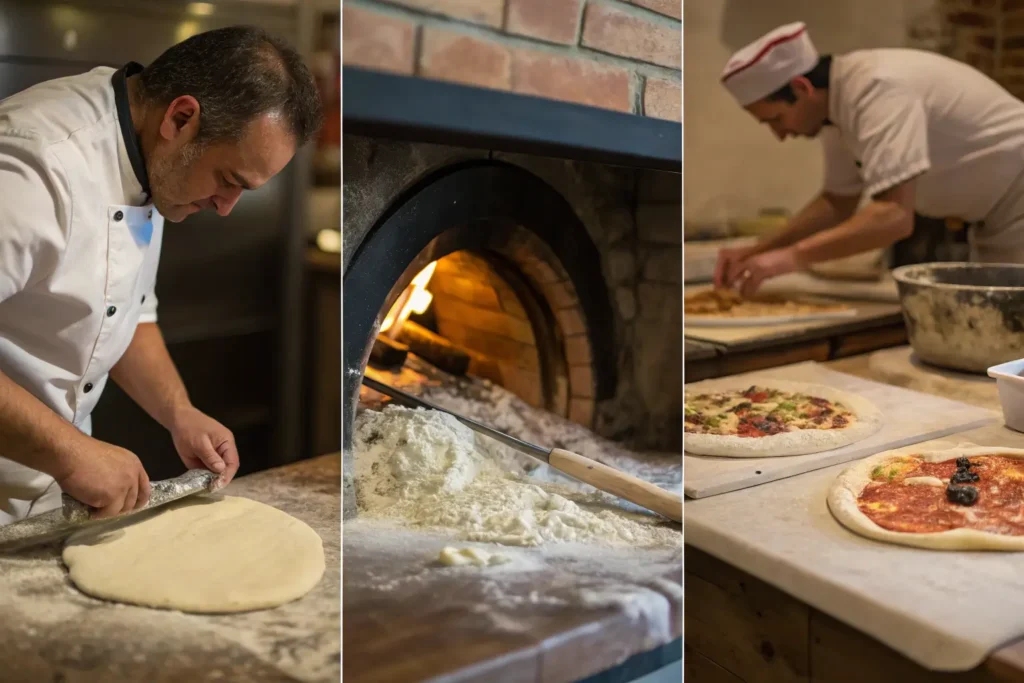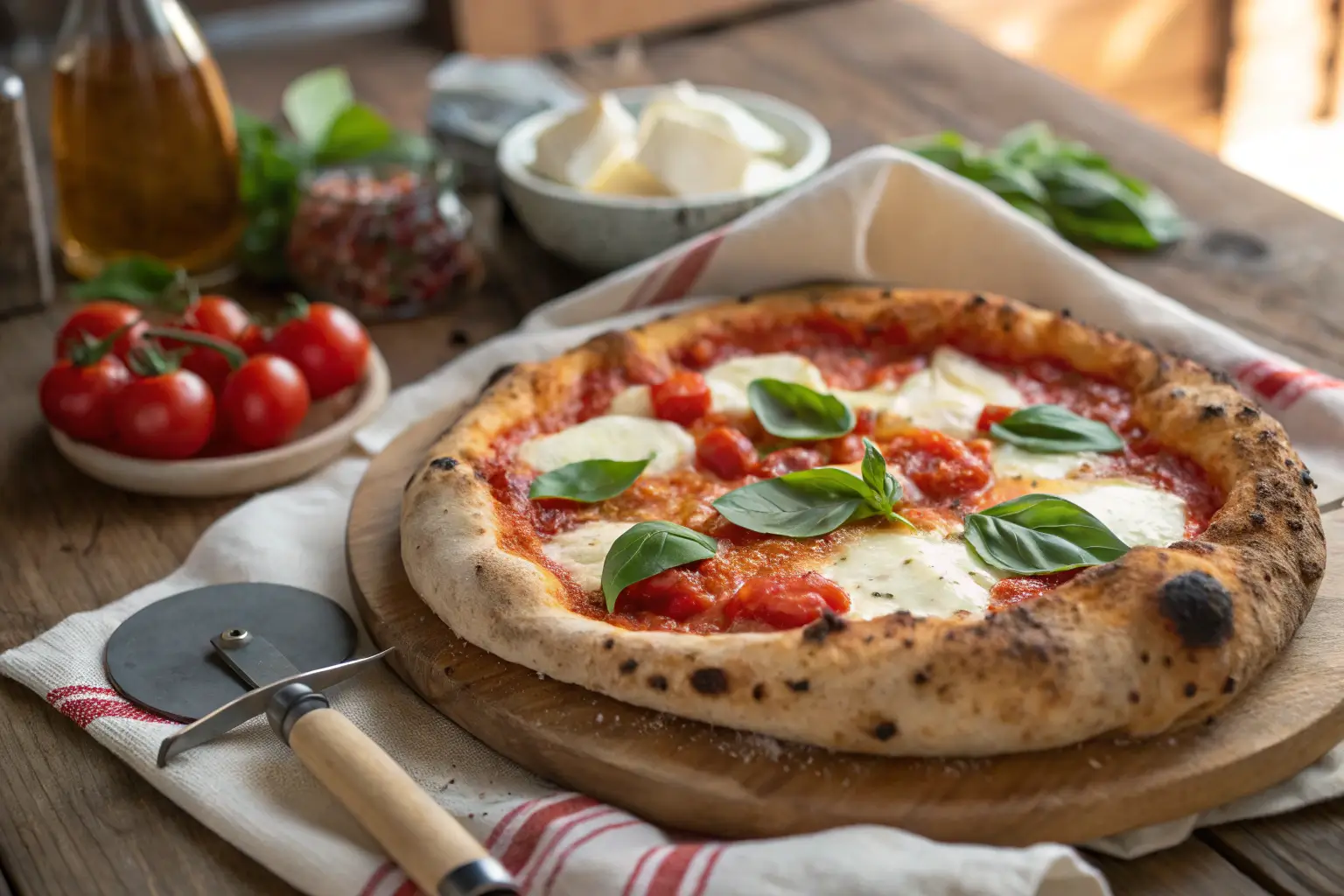Few things spark as much joy and debate as a slice of pizza, especially when it comes to defining what makes a true Italian pizza. This culinary masterpiece has traveled the globe, gaining fans in every corner. But what truly sets it apart from other pizza styles? In this article, we’ll journey through its history, regional varieties, key ingredients, traditional techniques, and more. By the end, you’ll not only appreciate the art of authentic Italian pizza but also know how to recognize it and maybe even recreate it at home.
Table of contents
- Introduction to True Italian Pizza
- Regional Variations of Italian Pizza
- Key Ingredients in Authentic Italian Pizza
- Traditional Techniques in Italian Pizza Making
- Recognizing Authentic Italian Pizzerias
- Common Misconceptions About Italian Pizza
- FAQ: All About True Italian Pizza
- Conclusion: Why True Italian Pizza Will Always Stand Out
Introduction to True Italian Pizza
The Origins of Italian Pizza
The story of pizza began centuries ago in Naples, Italy, where humble flatbreads evolved into a celebrated culinary art. In the 18th century, the introduction of tomatoes, once considered unfamiliar and rare, transformed the dish. Neapolitans combined simple, fresh ingredients such as San Marzano tomatoes, mozzarella, and basil to create the iconic Pizza Margherita—a tribute to Queen Margherita of Savoy.Savoy.
Defining ‘True’ Italian Pizza
What makes a pizza true Italian? It’s all about authenticity and simplicity. True Italian pizza follows strict guidelines, particularly for Neapolitan-style pizza. This includes the use of specific ingredients like Mozzarella di Bufala, finely milled Italian flour, and tomatoes grown in volcanic soil. Authentic pizzas are baked in wood-fired ovens, achieving that characteristic airy, slightly charred crust.
From the dough to the toppings, every detail matters. The philosophy is to highlight the natural flavors of each ingredient, avoiding excess or over-complication. Whether you’re biting into a Neapolitan pizza with its soft, foldable crust or savoring the crispy edges of a Roman-style pizza, each variety tells a unique story rooted in Italian culture.
Stay tuned as we dive into the fascinating world of regional pizza styles, the art of making it, and tips for spotting (or creating) the real deal!
Regional Variations of Italian Pizza

Neapolitan Pizza: The Classic Original
When people think of true Italian pizza, they often picture Neapolitan pizza. Born in Naples, this style features a soft, chewy crust and minimalistic toppings. Pizzaiolos use finely milled Italian flour, water, salt, and yeast to make the dough and ferment it for at least 24 hours. Baking the pizza in a blazing hot wood-fired oven creates the crust’s signature puffiness with charred spots, known as “leoparding.”
The toppings showcase simple yet flavorful ingredients: San Marzano tomatoes provide a sweet, tangy base, Mozzarella di Bufala adds creaminess, fresh basil leaves contribute a vibrant aroma, and a drizzle of high-quality olive oil enhances the taste. The Associazione Verace Pizza Napoletana (AVPN) strictly enforces guidelines to ensure this pizza maintains its authenticity worldwide.
Roman Pizza: A Thin and Crispy Delight
Head north to Rome, and you’ll find a very different style. Roman pizza, or “pizza al taglio,” stands out for its thin, crisp crust. Unlike the soft, foldable Neapolitan style, pizzaiolos bake Roman pizza at a slightly lower temperature, giving it a crunchier texture.
The toppings on Roman pizzas are more varied and adventurous. From thin slices of cured meats to seasonal vegetables and unique cheeses, there’s something for every palate. Its focus on crunch and variety makes it a favorite for pizza lovers seeking something lighter yet equally delicious.
Sicilian Pizza: Thick Crust and Rich Toppings
Travel further south, and you’ll discover Sicilian pizza. This style stands out with its thick, airy crust, often baked in rectangular pans. The dough is generously coated with olive oil before baking, resulting in a crispy bottom layer.
Sicilian pizza features bold, robust flavors. Toppings often include anchovies, hearty tomato sauces, and a mix of local cheeses. With its rustic charm and satisfying texture, it’s a unique take on true Italian pizza that highlights Sicily’s rich culinary traditions.
Key Ingredients in Authentic Italian Pizza

The Importance of Italian Flour
The foundation of true Italian pizza lies in its dough, and that starts with the flour. Authentic recipes use finely milled, high-protein Italian flour, often labeled as “Tipo 00.” This type of flour creates a smooth, elastic dough that’s perfect for achieving that signature airy crust.
Traditional Tomato Varieties
No Italian pizza feels complete without a rich tomato base. San Marzano tomatoes, grown in the volcanic soil of Mount Vesuvius, set the gold standard. Their low acidity, natural sweetness, and vibrant red color make them highly valued. Cooks often hand-crush and lightly season them to preserve their fresh, robust flavor.
Cheeses: Mozzarella di Bufala and Fior di Latte
Cheese plays a starring role in authentic Italian pizza. The most iconic choice is Mozzarella di Bufala, a creamy, tangy cheese made from water buffalo milk. Fior di Latte, a cow’s milk alternative, is also popular for its subtle flavor and melt-in-your-mouth texture. These cheeses are added sparingly to enhance the overall balance of the pizza.
Fresh Herbs and Olive Oil
The final touches of true Italian pizza hold as much importance as the base. Fresh basil leaves and oregano bring vibrant, aromatic flavors, while a drizzle of extra virgin olive oil enhances the richness and depth. These simple yet essential ingredients transform the pizza into a culinary masterpiece.
Every ingredient in true Italian pizza, from its dough to its toppings, highlights natural flavors, making each bite a celebration of Italian culinary tradition.
Traditional Techniques in Italian Pizza Making

Dough Preparation and Fermentation
Crafting a true Italian pizza begins with meticulous dough preparation. Using high-quality “00” flour, water, salt, and yeast, the ingredients are combined to form a smooth, elastic dough. The key to its signature texture lies in the fermentation process. Allowing the dough to rise slowly over 24 to 48 hours at a cool temperature develops complex flavors and a light, airy structure. This patience ensures a crust that’s both tender and chewy.
Hand Stretching the Dough
Once the dough has properly fermented, it’s time to shape it. Traditional pizzaiolos (pizza makers) rely on hand-stretching techniques, gently coaxing the dough into a thin, even circle without the use of rolling pins. This method preserves the air bubbles formed during fermentation, which are essential for a light and airy crust. The edges are left slightly thicker to create the characteristic raised border, or “cornicione,” of a Neapolitan pizza.
Wood-Fired Oven Baking
The hallmark of authentic Italian pizza is its quick bake in a scorching wood-fired oven. These ovens reach temperatures upwards of 485°C (905°F), cooking the pizza in just 60 to 90 seconds. The intense heat ensures a perfectly blistered crust—crispy on the outside, yet soft and moist inside. Additionally, the burning wood imparts a subtle smokiness, enhancing the overall flavor profile.
Recognizing Authentic Italian Pizzerias

Certifications and Associations
Identifying a pizzeria that serves true Italian pizza can be facilitated by looking for specific certifications. Organizations like the Associazione Verace Pizza Napoletana (AVPN) set stringent standards to preserve the traditional art of Neapolitan pizza making. Pizzerias bearing the AVPN seal have demonstrated adherence to these authentic methods, ensuring a genuine dining experience.
Characteristics of a True Italian Pizzeria
Beyond certifications, several telltale signs indicate an authentic Italian pizzeria:
- Menu Simplicity: Traditional pizzerias often feature a concise menu, focusing on classic varieties like Margherita and Marinara, emphasizing quality over quantity.
- Fresh, High-Quality Ingredients: The use of fresh, locally sourced, or authentic Italian ingredients is paramount. Look for mentions of San Marzano tomatoes, Mozzarella di Bufala, and other regional specialties.
- Wood-Fired Oven: A visible wood-fired oven is a strong indicator of traditional pizza baking methods, contributing to the unique flavor and texture of the pizza.
- Skilled Pizzaiolos: Observing the pizzaiolo’s technique can be revealing. Hand-stretching the dough and expertly managing the oven are signs of adherence to authentic practices.
By paying attention to these details, you can recognize pizzerias that deliver an authentic Italian pizza experience. Every bite reflects the rich culinary heritage of Italy.
Common Misconceptions About Italian Pizza
Debunking Myths About Toppings
One of the biggest misconceptions about true Italian pizza lies in its toppings. Many people assume that pizzas must include a variety of meats, cheeses, and vegetables. However, authentic Italian pizza highlights simplicity and balance. Classic options like Margherita or Marinara showcase just a few high-quality ingredients, such as San Marzano tomatoes, Mozzarella di Bufala, fresh basil, and olive oil.
Another myth is the idea that pineapple belongs on Italian pizza. While widely popular in some parts of the world, this combination is far from traditional. Italians prefer to let the natural flavors of their ingredients shine without overpowering additions.
Clarifying Cooking Methods
There’s also confusion about the baking process. Some assume that all pizzas can be cooked in a standard oven and still qualify as true Italian pizza. In reality, the hallmark of authenticity is baking in a wood-fired oven. This method ensures the unique texture and flavor profile that distinguishes Italian pizza from other styles.
Additionally, pre-made dough or frozen bases are often mistaken for acceptable shortcuts. In Italy, dough preparation is an art, with long fermentation times ensuring the perfect balance of flavor and texture. By understanding these distinctions, you’ll better appreciate what sets true Italian pizza apart.
FAQ: All About True Italian Pizza
1. What is a true Italian pizza?
A true Italian pizza represents a culinary masterpiece, celebrated for its simplicity, balance, and the use of high-quality ingredients. Traditional Italian pizzas feature a thin, crispy crust, fresh toppings, and avoid processed ingredients. The focus remains on showcasing the natural flavors of each component. Key elements of a true Italian pizza include:
- Dough: Prepared with flour, water, yeast, and salt, the dough ferments for several hours to develop a light and airy texture.
- Tomato Sauce: Crafted from fresh San Marzano tomatoes, grown in the rich volcanic soil of Mount Vesuvius.
- Cheese: Includes Mozzarella di Bufala (buffalo mozzarella) or Fior di Latte (cow’s milk mozzarella).
- Toppings: Simple and fresh options like basil, olive oil, and occasionally a few vegetables or meats.
2. What is the official pizza of Italy?
The Pizza Margherita is the official pizza of Italy. Protected under Italian law, it holds the status of a traditional specialty. This iconic pizza was named in 1889 to honor Queen Margherita of Savoy and includes:
- Tomato sauce
- Mozzarella cheese
- Fresh basil leaves
These ingredients represent the colors of the Italian flag, making it a symbol of national pride and culinary heritage.
3. What is the most authentic Italian pizza?
The most authentic Italian pizza is the Neapolitan Pizza (Pizza Napoletana), which originated in Naples. It has a special designation from UNESCO as an intangible cultural heritage. Authentic Neapolitan pizza must meet strict guidelines, including:
- Dough that is hand-stretched and no thicker than 3 mm in the center.
- Baked in a wood-fired oven at a temperature of around 485°C (905°F).
- A soft, slightly chewy crust with characteristic charred bubbles.
Popular variations include Margherita and Marinara, the latter being the simplest pizza, made with tomato sauce, garlic, oregano, and olive oil—without cheese.
4. What is considered the original pizza?
The modern pizza, as we know it, originated in Naples during the 18th century. Initially, pizzas were simple flatbreads topped with ingredients like garlic, lard, salt, and basil. Tomatoes, introduced from the Americas, revolutionized pizza into the dish we recognize today.
The Pizza Marinara, first created in the 1730s, is widely regarded as the earliest form of modern pizza. It was made using just tomato, garlic, oregano, and olive oil. The name “Marinara” reflects its association with fishermen, for whom it was a staple.
Conclusion: Why True Italian Pizza Will Always Stand Out
Italian pizza is more than just food—it’s an art form, a cultural treasure, and a testament to the beauty of simplicity. From the lively streets of Naples to the serene corners of Rome and the sunlit terraces of Sicily, true Italian pizza reflects a story of tradition, passion, and dedication. Every bite reveals centuries of culinary expertise, with each ingredient selected for its quality rather than quantity.
What distinguishes true Italian pizza is not only its taste but the care behind its preparation. The slow fermentation of the dough, the careful selection of hand-picked San Marzano tomatoes, and the distinct smokiness of a wood-fired oven embody more than techniques—they represent traditions passed down through generations.
Whether you’re savoring a Neapolitan pizza on a cobblestone street in Italy or recreating it in your own kitchen, this dish reminds us of the beauty of simplicity and authenticity. By appreciating these traditions, you’re not just enjoying pizza—you’re embracing a slice of Italian culture and history.


2 thoughts on “How to Spot True Italian Pizza: A Guide to Authentic Ingredients and Techniques”